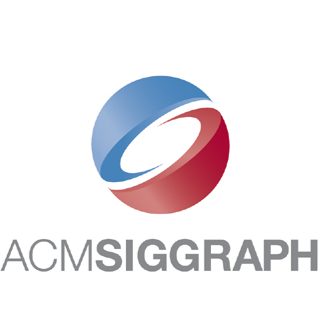
SIGGRAPH 1992 论文列表Proceedings of the 19th Annual Conference on Computer Graphics and Interactive Techniques, SIGGRAPH 1992, Chicago, IL, USA, July 27-31, 1992. |
Modeling seashells.
Generative modeling: a symbolic system for geometric modeling.
A collision-based model of spiral phyllotaxis.
Interactive inspection of solids: cross-sections and interferences.
Using deformations to explore 3D widget design.
An object-oriented 3D graphics toolkit.
Through-the-lens camera control.
CONDOR: constraint-based dataflow.
Smooth interpolation of orientations with angular velocity constraints using quaternions.
Dynamic deformation of solid primitives with constraints.
Dynamic simulation of non-penetrating flexible bodies.
Interactive spacetime control for animation.
Illumination from curved reflectors.
An importance-driven radiosity algorithm.
Measuring and modeling anisotropic reflection.
Predicting reflectance functions from complex surfaces.
A fast and accurate light reflection model.
Xiao D. He Patrick O. Heynen Richard L. Phillips Kenneth E. Torrance David Salesin Donald P. Greenberg
Fast shadows and lighting effects using texture mapping.
A scalable hardware render accelerator using a modified scanline algorithm.
PixelFlow: high-speed rendering using image composition.
An algorithm with linear complexity for interactive, physically-based modeling of large proteins.
Sound rendering.
Merging virtual objects with the real world: seeing ultrasound imagery within the patient.
High resolution virtual reality.
Surface modeling with oriented particle systems.
Direct manipulation of free-form deformations.
Functional optimization for fair surface design.
Variational surface modeling.
Topological design of sculptured surfaces.
Computing the antipenumbra of an area light source.
Interval arithmetic recursive subdivision for implicit functions and constructive solid geometry.
Interval analysis for computer graphics.
A simple method for extracting the natural beauty of hair.
Three dimensional apparel CAD system.
Dressing animated synthetic actors with complex deformable clothes.
Pump it up: computer animation of a biomechanically based model of muscle using the finite element method.
Smoothing polyhedra using implicit algebraic splines.
Surface reconstruction from unorganized points.
Decimation of triangle meshes.
Re-tiling polygonal surfaces.
Shape transformation for polyhedral objects.
Scheduled Fourier volume morphing.
Feature-based image metamorphosis.
A physically based approach to 2-D shape blending.
A telecomputer.

